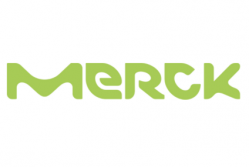Merck, a leading science and technology company, is announcing its leadership role in the joint project entitled “Exploration of quantum materials – New paths to realizing innovative optoelectronic components (ELQ-LED)”.
The aim of the project, which will receive total funding of € 5.5 million from the German Federal Ministry of Education and Research (BMBF), is to develop quantum materials for innovative applications in the display and lighting industries. The total budget of the project amounts to € 9.1 million.
Basic research for light of the future
Modern light sources such as organic light-emitting diodes (OLEDs) must satisfy stringent requirements: high image quality and extremely slim, highly energyefficient designs. With quantum materials as emitters, these advantages are now to be further exploited while simultaneously reducing costs and optimizing color spectra. The resulting innovative component utilizing the quantum materials is called an electroluminescent quantum materials-based light-emitting diode (ELQLED). Quantum materials feature even greater color intensity, which can be controlled by the particle size. The toxic metal cadmium is deliberately not being used in the development of materials in order to preserve the safety of OLEDs. “ELQ-LEDs represent a systematic refinement of OLEDs and offer great potential for synergies between OLED and quantum materials,” says Michael Grund, Head of OLED and Quantum Materials at Merck.
Merck, OSRAM OLED, the Fraunhofer Institute for Applied Polymer Research, the University of Augsburg, Ludwig Maximilians University in Munich, and Carl von Ossietzky University of Oldenburg have joined forces as partners along the organic electronics value chain in order to demonstrate the basic applicability of quantum materials in lighting. In addition to conducting research on quantum materials, the partners plan to test and develop components, processes, matrix materials, transport materials, and inks following the comprehensive approach. All components are to be completely printable to save resources during production. The printed parts are being tested in display and automotive tail light demonstrators. The research project is scheduled to run for three years, ending in summer 2020.
About Merck
Merck is a leading science and technology company in healthcare, life science and performance materials. Around 50,000 employees work to further develop technologies that improve and enhance life – from biopharmaceutical therapies to treat cancer or multiple sclerosis, cutting-edge systems for scientific research and production, to liquid crystals for smartphones and LCD televisions. In 2016, Merck generated sales of € 15 billion in 66 countries. Founded in 1668, Merck is the world’s oldest pharmaceutical and chemical company. The founding family remains the majority owner of the publicly listed corporate group. Merck holds the global rights to the Merck name and brand. The only exceptions are the United States and Canada, where the company operates as EMD Serono, MilliporeSigma and EMD Performance Materials.

